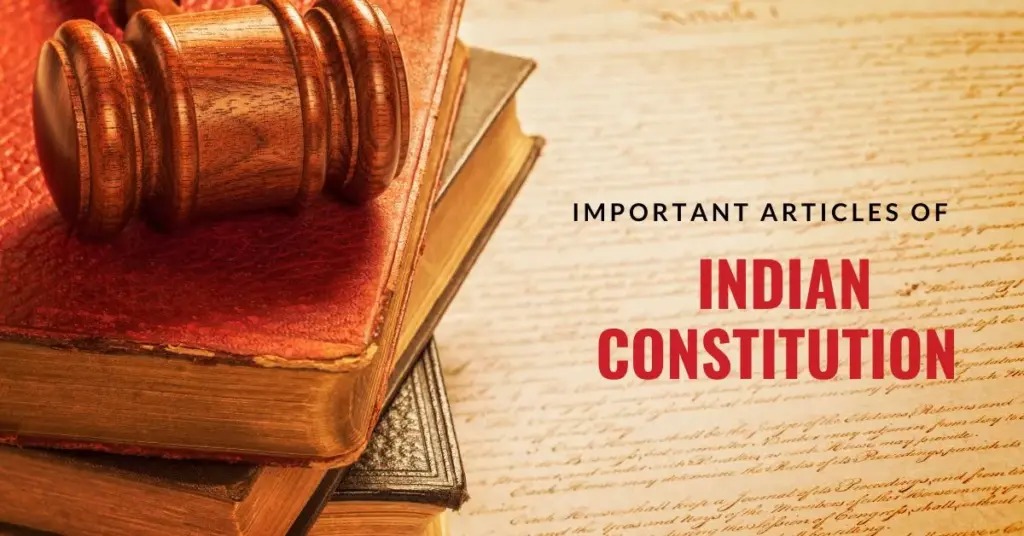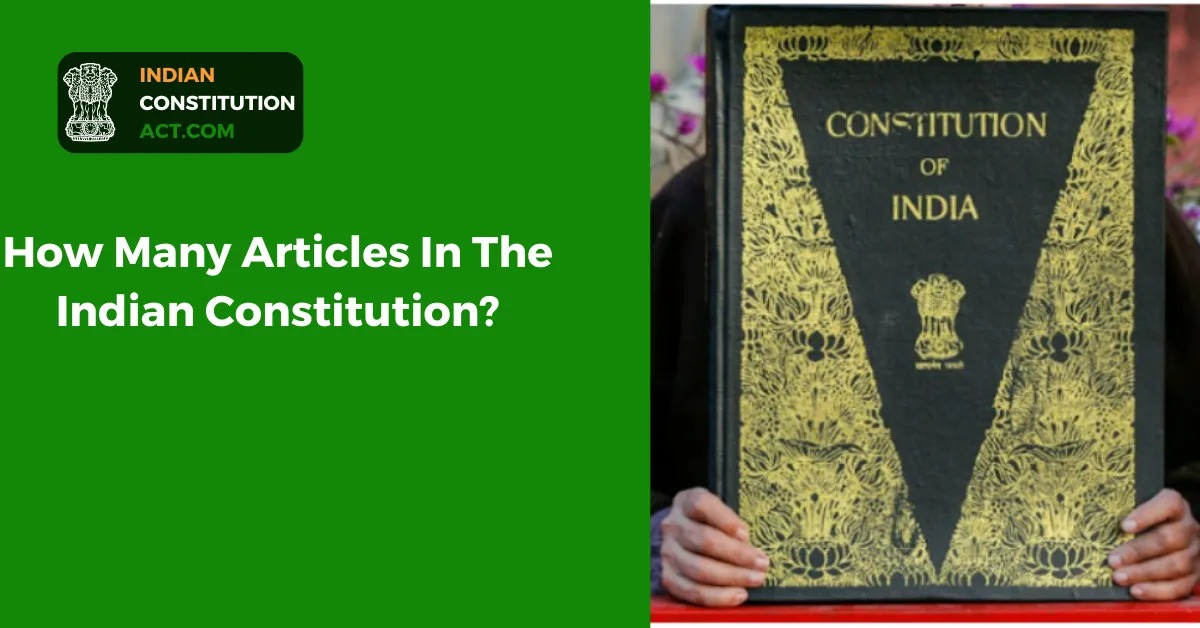The Indian Constitution is the supreme law of India. The document lays down the framework that demarcates the fundamentals of several things. There are a lot of articles under the Constitution. This constitution was implemented 74 years ago. It contains all the laws and rules that every Indian has to follow, and if any person breaks the rules and regulations. You might be curious to learn how many articles in the Indian Constitution. Read this entire blog to know how many articles are there and also learn about some more information.
What Is the Indian Constitution Act?

The Constitution of India is the supreme law of India. The document lays down the framework that demarcates fundamental political codes, procedures, structure, powers, and duties of government institutions and sets out the fundamental rights, directive principles, and duties of citizens. The constitution of India was adopted on 26th November 1949. The date effective of the constitution is 26th January 1950. It is the longest-written national constitution in the world.
The constitution of India impacted constitutional supremacy and it was officially adopted by its people with a declaration in its preamble. The parliament cannot override the constitution. This constitution replaced the Government of India Act 1935 because of the country’s fundamental governing document and the Dominion of India became the Republic of India.
Also read: Are there 470 Articles In The Indian Constitution?
To perfectly ensure constitutional autochthony, its framers repealed it before the acts of the British parliament in Article 395. India is one of the biggest democratic nations in the world. After more than 200 years of colonial rule, several independence movements, the Indian national movement, and a rich history our Indian constitution was officially established on 26th January 1950.
The judicial, legislative, and executive branches of the government are each given roles and obligations that are outlined in the Constitution. Several significant provisions outline the basic rights of a person, political obligations, and the process which might be simply found in the constitution of India.
How Many Articles In The Indian Constitution?
It is important to learn how many articles are present in the constitution of India. It is because, it is important for the people who are preparing for the UPSC exams, it is important to cover Indian Constitution completely. So there is a series of articles in the constitution that specify laws and regulations. All of the articles include the topics of Luke’s political system, election procedures, the rights of individuals, etc. So the Constitution of India has a total of 448 articles, 25 parts, 12 scheduled, and 104 amendments before 1949, it had a total of 395 articles divided into 22 parts.
Every single article addresses completely different topics that are related to the Constitution which includes legislatures, schedules, executive branches, sections, fundamental rights, and entities established by statute. This transformation has been achieved through a total of 105 amendments.
List Of Articles And Their Related Subjects: Most Important Article Of The Constitution
Part 1 includes Articles 1 to 4 and the subject is Union & its Territory, part 2 includes Articles 5 to 11 and their subject name is Citizenship, part 3 includes Articles 12 to 35 and their subject name is fundamental rights, part 4 includes Article 36 to 51 and the subject name is directive principles, part 4 A includes article 51A and the subject name is fundamental duties. Part 5 includes articles 52 to 151 and the subject name is The Union, part 6 includes articles 152 to 237 and the subject name is The States.
Part 7 is the 7th Amendment Act of 1956 repealed Part 7, which includes Article 238. Part 8 includes articles 239 to 242 and its subject name is The Union Territories, part 9 includes articles 243 to 243ZG and the subject name is The Panchayats, part 9 A includes articles 243P to 243ZG and the subject name is The Municipalities, part 9 B includes article 243ZH to 243ZT and the subject name is Co-operative Societies. Part 10 includes articles 244 to 244A and the subject name is Scheduled and tribal areas, part 11 includes articles 245 to 263 and the subject name is Relation between Union & states, part 12 includes articles 264 to 300A and the subject name is Finance, property contracts, and suits, part 13 includes article 301 to 307 and the subject name is trade, commerce, and intercourse within the territory of India.
Part 14 includes articles 308 to 323 and the subject name is Services under the Union and States, part 14A includes articles 324 to 329A and the subject name is Tribunals, the Part 15 includes articles 330 to 342 and the subject name is Elections. Part 16 includes articles 343 to 351 and the subject name is special provisions related to certain classes.
Part 17 includes articles 352 to 360 and the subject name is Official Languages, part 18 includes articles 361 to 367 and the subject name is Emergency Provisions, part 19 includes article 368 and the subject name is Miscellaneous, part 20 includes articles 369 to 392 and the subject name is temporary, transitional, and special provisions, and part 21 includes article 393 to 395 and the subject name is the short title, commencement, authoritative test in Hindi, and Repeals.
Stages Of Formation Of The Constitution Of India
On 6th December 1946, the Indian Constitution Assembly was formed. On 9th December 1946, the first meeting was officially held in the constitution hall. On 11th December 1946, the assembly appointed the assembly appointed Rajendra Prasad as its president, H.C. Makhuerjee as vice president, and B.N. Raju as constitutional legal adviser.
On 13th December 1946, the Objective Resolution was officially presented by Jawhawrlal Nehry, laying down the underlying principles of the constitution. Sometime later, it turns into the Preamble of the Constitution. On 22nd January 1947, the objective resolution unanimously got adopted, and on 22nd July 1947 the national flag was adopted, on 15th August 1947, India achieved independence, India split into the Dominion of India and the Dominion of Pakistan.
On 29th August 1947, the drafting committee appointed B.R. Ambedkar as its chairman. On 16th July 1948, Harendra Coomar Mookerjee, V.T. Krishnamachari got elected as the second vice-presented of the Constituent Assembly. On 26th November 1949, the Constitution of India was passed and adopted by the assembly. On 26th January 1950, the last meeting of the Constituent Assembly was held. The Constitution was signed and accepted. Finally, on 26th January 1950, the Constitution came into force.
The Constitution of India stands as a monumental report that reflects just the aspirations and struggles of the st but it serves as a bn of democracy and rights for people. This is a framework that comprises a total of 448 articles, 25 parts, 12 scheduled, and 104 amendments. It is the fundamental rights, standards the duties that govern the entire nation.
The Indian Constitution represented the true essence of a democratic republic. Respecting and giving Constitituion is very important to perfectly make sure that it stays a guiding light for the generations that are going to come.
